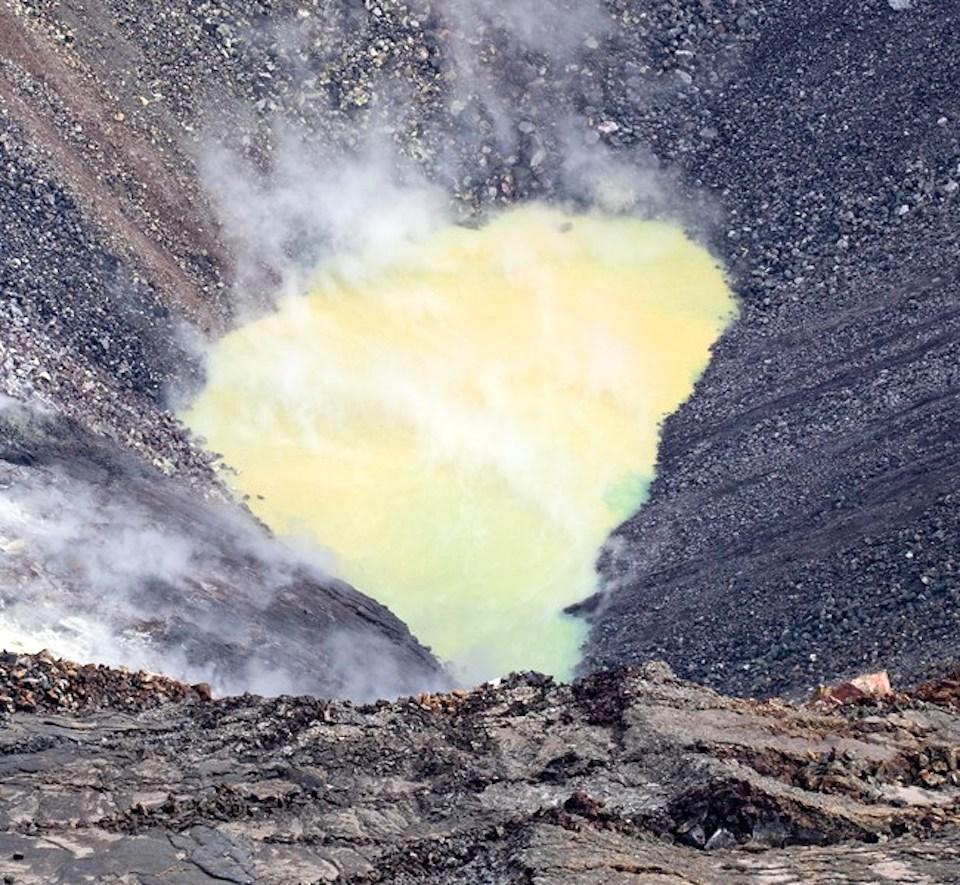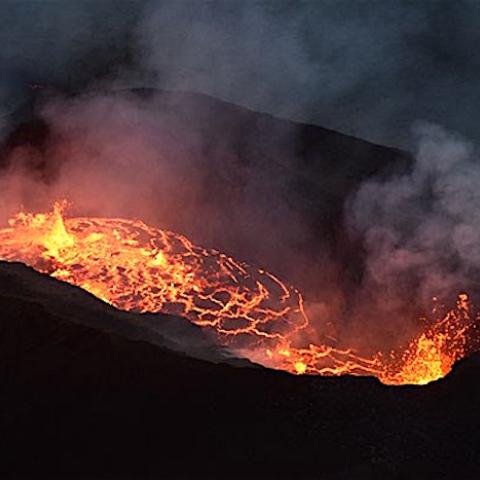
Halemaʻumaʻu crater, Hawai'i Volcanoes National Park, October 26, 2019/NPS, A. LaVelle
Back in July, U.S. Geological Survey researchers spotted a small pool of water at the bottom of the Halema‘uma‘u crater at Hawai'i Volcanoes National Park. Since then, that "small pool" has grown to one larger than a football field, and scientists aren't exactly sure what's driving it.
According to the USGS, which flew an unmanned probe down into the crater on Saturday, the pool is currently about 360 feet long by 164 feet wide, and about 33 feet deep. It lies nearly 2,000 feet below the western caldera rim, and the water temperature is almost 160 degrees Fahrenheit. The probe gathered photographs, made gas measurements, and snatched a water sample from the pool's scalding hot surface. Once the data is analyzed, USGS will announce its findings.

An unmanned aircraft system, UAS, flown to gather photographs, gas measurements and a water sample from the scalding hot surface of the pond in Halemaʻumaʻu crater on October 26th, 2019/NPS, A. LaValle
Although scientists are confident the lake is the rising water table known to exist within Kīlauea Volcano, never before in modern history has there been water visible at the summit of Kīlauea in the form of a lake, park staff noted.
Kīleau spent much of 2018 erupting, before settling down in September of that year. USGS monitoring data continue to show steady rates of seismicity and ground deformation, low rates of sulfur dioxide emission, and only minor geologic changes since the end of eruptive activity in September 2018.

The body of water in Halemaʻumaʻu crater, as seen on October 26th, 2019/NPS, J. Wei




 Support Essential Coverage of Essential Places
Support Essential Coverage of Essential Places






